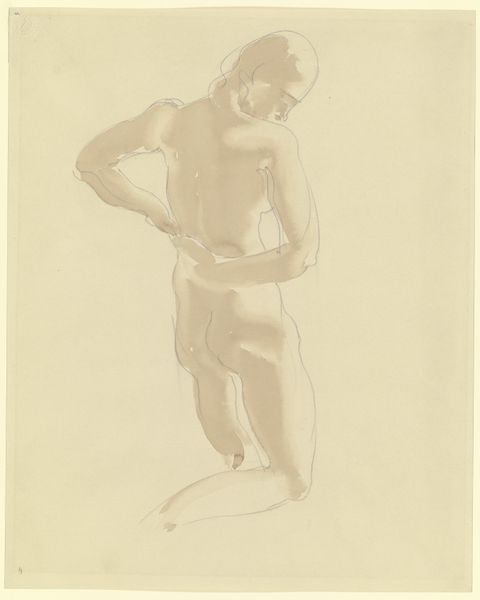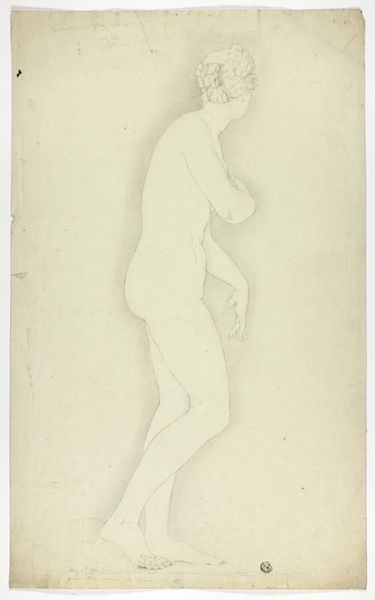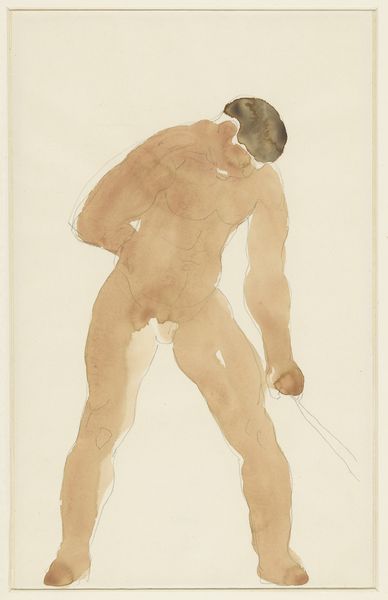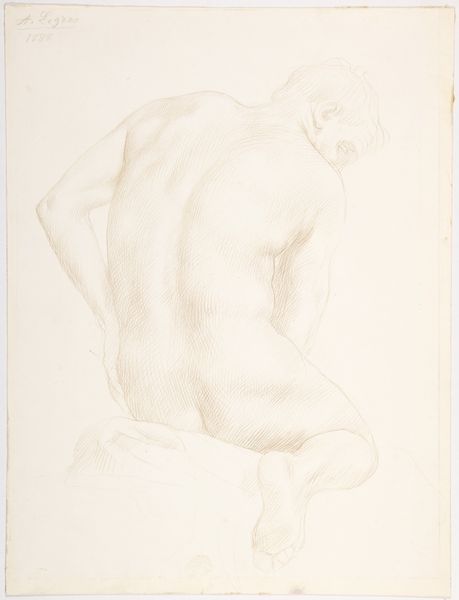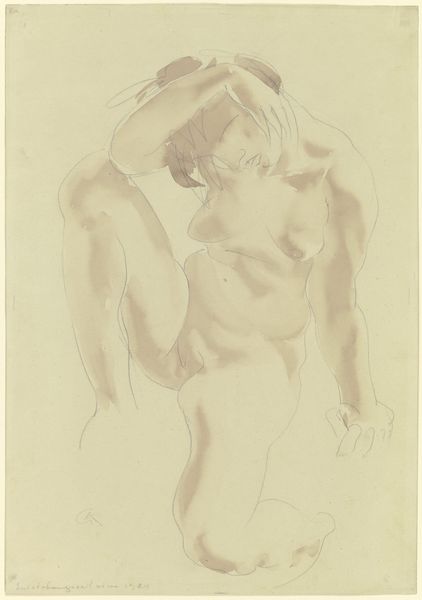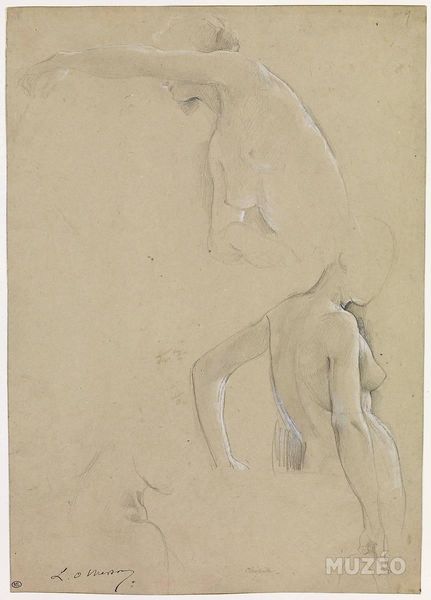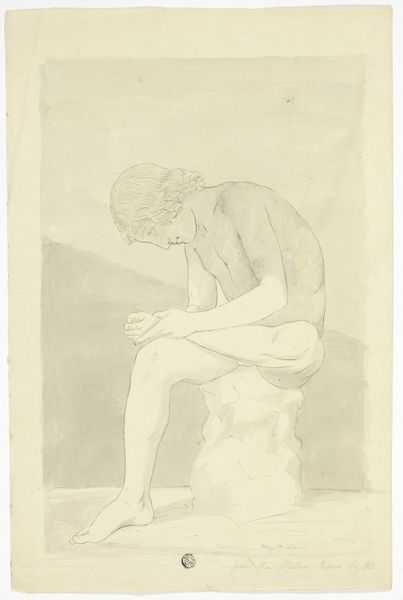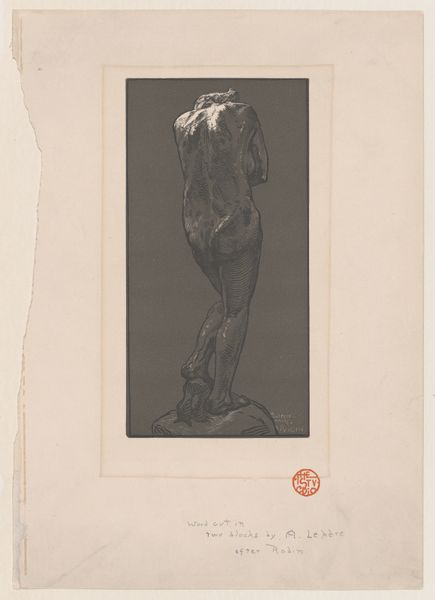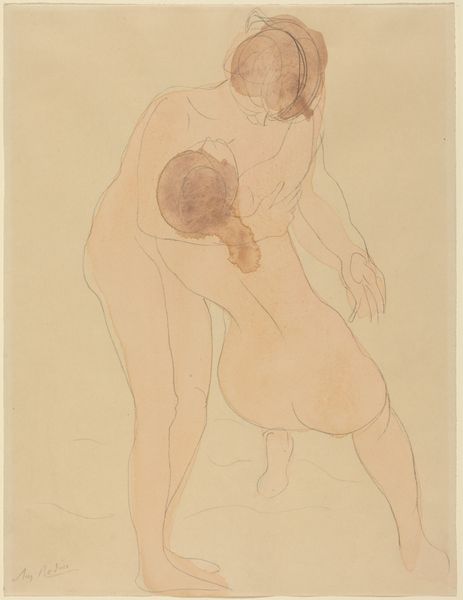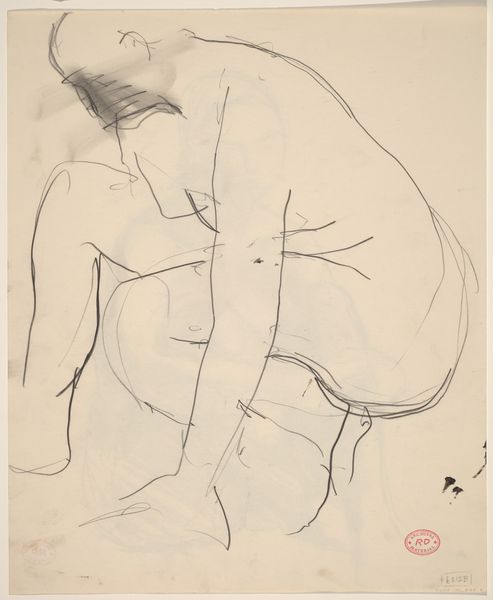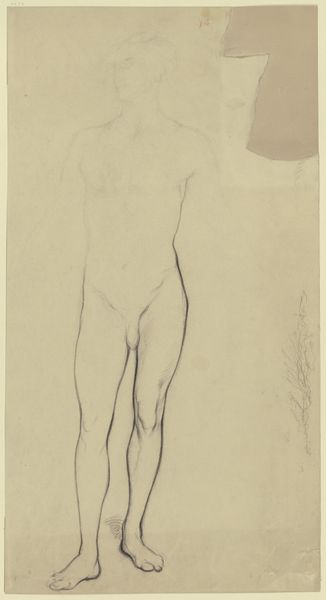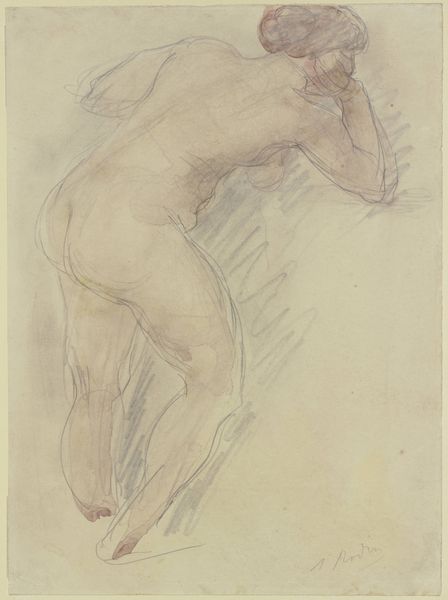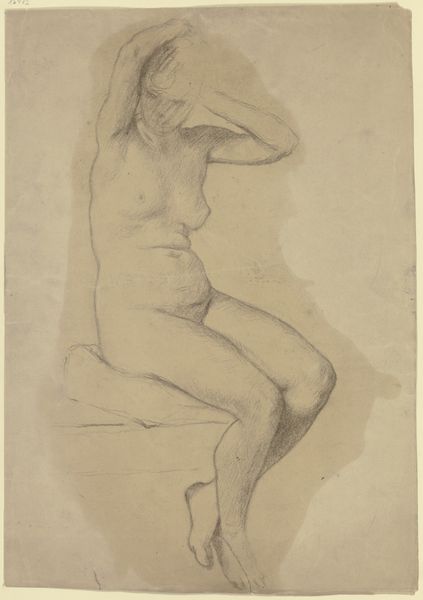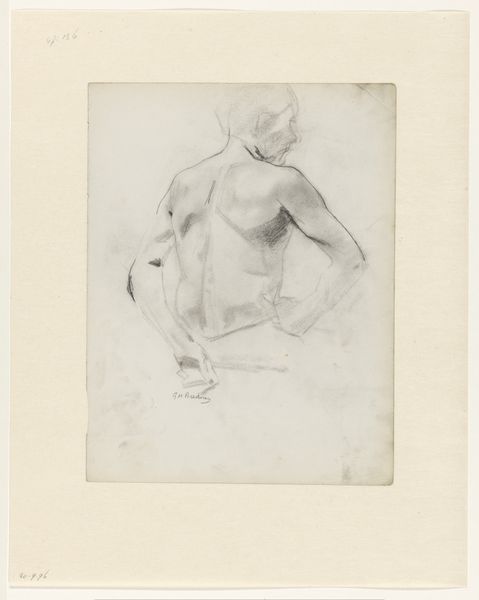
drawing, paper, watercolor
#
drawing
#
water colours
#
figuration
#
paper
#
watercolor
#
romanticism
#
nude
#
watercolor
Copyright: Public Domain
Curator: Here we have a watercolor drawing entitled "Zwei Frauen umschlingen sich und blicken sich an, die rechte kniet," housed right here at the Städel Museum. The artist is Auguste Rodin. Editor: The intimacy is immediate. There's something so raw and vulnerable about these two figures. The pale watercolors give the figures a ghostly quality, like a fleeting memory. Curator: It is a prime example of Rodin's figuration studies, though created with watercolours on paper, this piece presents an opportunity to observe the formal arrangement of line and wash and also its relation with Rodin’s production. Its chromatic range—the application of diluted pigments—lends an ethereal yet powerful aura to this scene. Editor: Looking at the historical context, you know, this reminds me of a larger shift that was happening in the art world at the time—away from the rigid academic tradition, and toward more personal, emotionally driven expression, particularly when depicting the female nude. The placement in a public museum today certainly reflects evolving perspectives of female representation. Curator: Precisely. Semiotically, one could read the embrace not just as an expression of intimacy, but also of solace, dependence. Observe how Rodin articulates tension within the gentle curvature of the embracing figures. Editor: The fact that Rodin's sketches were initially perceived as shocking in their day reminds us that art can reflect and push the boundaries of society's acceptance, leading to its display in a public museum such as the Städels today. Curator: What this watercolor offers, I believe, is a reduction of form and narrative. Stripped to its most rudimentary essence, it urges us toward a purer, non-didactic understanding of how art can mirror the subjective, not the objective. Editor: Yes, this is precisely what the evolution of public perception looks like – that artworks like this can hang in institutions like this to invite a contemporary gaze. Curator: Ultimately, it serves as a lesson in form, while also encapsulating universal notions of closeness. Editor: Agreed. It truly reveals the beauty in shared moments and challenges the traditional lens through which such affection is represented and understood.
Comments
No comments
Be the first to comment and join the conversation on the ultimate creative platform.
